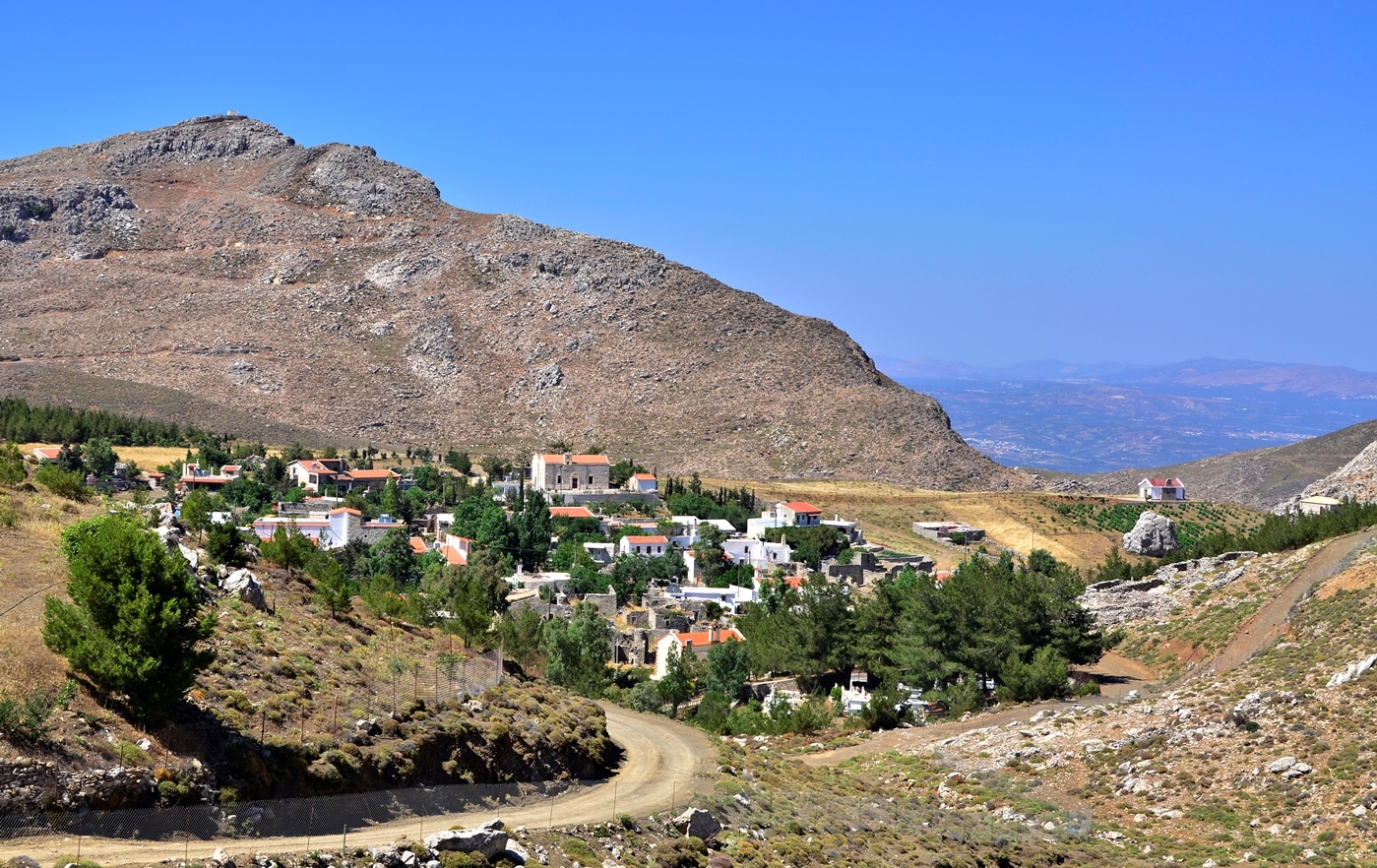
You will find 55 small and large villages scattered in this area.
They are the soul of the region, the ark of a land of a thousand buried treasures, which merely requires an adventurous spirit and … a big stomach to fill with the meze and raki from the ‘kafeneia’ cafés, where you will experience the renowned hospitality of the residents.
Touring the area, you soon realise that these small and large villages situated on plains, small vales and mountain slopes are the most important cultural product of Crete.
In terms of town organisation and architectural structure, these villages radiate the most timeless elements of the entire island’s civilisation. Consider that a large number of the mountain villages are built on ancient locations and contain traces of every historical phase of their lives. Around each settlement are scattered important architectural monuments, such as ‘mitato’ [a stone hut for herdsmen], spring fountains, small bridges, individual houses.
Architecture
Traditional folk architecture until the 20th century has its formative and morphological roots in the beginnings of the island’s history. The structure of the Cretan mountain village is essentially almost identical to the ruins of the Minoan settlements of Palekastro in Siteia and of Gournia, the oldest settlement completely excavated in Europe.
You will notice that most villages are built on mountain slopes or hilltops so as to maintain a defensive advantage over invaders of older eras.
These settlements are densely built with narrow streets and attached houses, in a way that makes it very easy for houses to communicate through their terraces.
The village centre was usually a church, around which the social life of the settlement developed.
In terms of typology, the simplest form of dwelling one can find in such villages is the ‘monochoro’ single-spaced ground-floor house, where all daily activity took place in a single unified space. In the ‘monochoro’, the ‘parastia’ –the ancient hearth– also functions as a kitchen. There was usually a raised wooden level serving as a loft, where inhabitants used to sleep. Under it was a storage space.
Stone benches along the walls served as a sitting room, often as beds due to lack of furniture, while small alcoves on the walls served as cupboards. The outer part of the walls was usually unpainted. Interior floors were made of pressed earth and flat roofs stood on mostly cypress wood panels, on which smaller branches were used to create thick arrangements, so as to support the final coating made of waterproof clay soil.
In areas that lacked the lumber used to create small openings, the form of the single-spaced ‘kamarospito’ was developed. In this case, one or more stone arches were used to cover the necessary opening to support the room. In this form, the stone arches created corners used in various ways, depending on the needs of each individual family.
The ‘monochoro’ was expanded using a new floor, accessible via an internal staircase. In this case, the ground floor was used as storage space and to keep animals, and the top floor satisfied the family’s daily needs.
Gradually, by annexing additional spaces, a more complex type of house was created, which is the most widespread type on Crete. That was the C-type two-story house, often including additional auxiliary spaces around its yard. Moreover, we often meet elegant openings made out of limestone/tufa, which sometimes included a carved lintel with sculpted ornamentations. Specifically in areas of Venetian influence, we find impressive doorframes featuring beautiful ornamentations.
After the Second World War, the use of modern construction materials started to change the traditional character of Cretan villages, as additions were made to cover new needs. At the same time, that reconstruction period saw traditional Cretan folk houses change towards a more colourful, more outgoing paradigm. Therefore, they might have move away from the traditional forms of the past, but they also started gaining architectural elements that the fear of conquerors had led to disuse. Elements of ‘translucence’, colour and openness, were important in Minoan architecture. Today, settlements where restoration and rebuilding programs were carried out, offer interesting examples of the coexistence of such diverse architectural elements.



